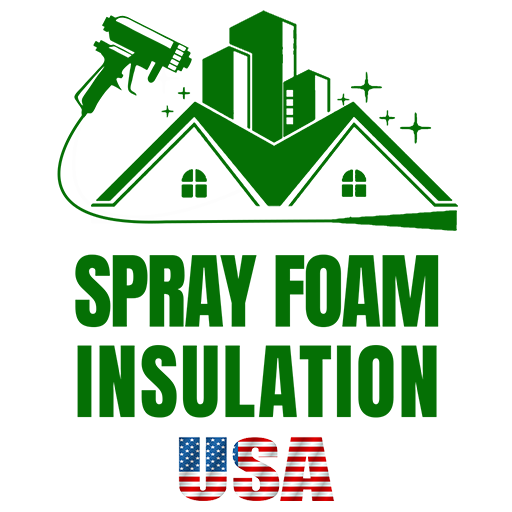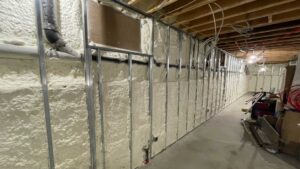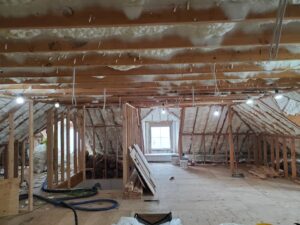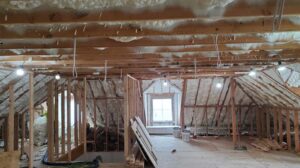When searching for the best materials for building and insulation, it’s crucial to opt for solutions that offer durability, sustainability, and cost-effectiveness. For those in NY and NJ particularly, focusing on energy-efficient and eco-friendly materials can significantly reduce energy bills, enhance indoor comfort, and contribute to protecting our environment.
Choosing the right materials for your construction or renovation project should always be guided by these priorities. Key considerations include thermal performance, environmental impact, and longevity. For instance, materials like spray polyurethane foam (SPF) not only provide excellent insulation but also contribute to a tighter building envelope, reducing the need for excessive heating or cooling.
In this guide, we’ll dive deep into building materials. From understanding basic properties like hardness and durability to exploring cutting-edge options that modern technology has to offer, we aim to equip you with all the information needed to make informed decisions.

Understanding Building Materials
When choosing the best materials for construction and insulation, it’s crucial to consider three key properties: hardness, durability, and eco-friendliness. These factors not only affect the performance and longevity of the materials but also their impact on the environment.
Hardness
Hardness in building materials refers to their ability to resist deformation or penetration. For example, materials like diamond and certain ceramics are known for their extreme hardness, measured in gigapascals (GPa) on scales like Vickers or Brinell. The Vickers hardness test, which applies a known force to a material and measures the size of the resulting indentation, is a common method for assessing this property. Materials with high hardness ratings are essential in areas requiring high wear resistance, such as flooring and countertops.
Durability
Durability measures how well materials can withstand various elements over time, including weather, chemical exposure, and mechanical wear. For instance, materials used in roofing and exterior walls must be durable enough to resist the degrading effects of sun, rain, and wind. Products like EPDM and TPO roofing are popular due to their strong resistance to ultraviolet light and temperature fluctuations, making them long-lasting choices for protective exterior applications.
Eco-friendliness
The eco-friendliness of building materials is determined by their environmental impact during production, use, and disposal. Sustainable materials like wool, cotton, and hemp are valued for their low environmental footprint. They are renewable, biodegradable, and often produced in ways that require less energy and produce fewer emissions than synthetic alternatives. For insulation, materials like spray foam made from bio-based contents offer improved energy efficiency, which reduces the overall carbon footprint of buildings.
Incorporating these considerations into your material selection process ensures not only the structural integrity and longevity of your construction projects but also supports environmental sustainability. These factors become even more crucial in the selection of materials for modern construction challenges.
Continuing on, let’s explore some of the most innovative materials that are shaping the future of construction.
Superhard Materials
When selecting best materials for construction, especially those that need to withstand extreme wear and pressure, understanding the concept of superhard materials is crucial. These materials are not just hard; they are among the hardest materials known, capable of resisting severe abrasion and deformation under high pressures.
Vickers Hardness Test
To measure the hardness of materials, we use the Vickers hardness test. This test involves pressing a diamond pyramid indenter into a material and measuring the indentation left behind. The smaller the indentation, the harder the material. This method gives us a clear, quantifiable measure of hardness in units called Gigapascals (GPa).
Understanding Gigapascals
A Gigapascal is a unit of pressure that is extensively used to express the hardness of materials. One Gigapascal equals one billion pascals, and in the context of superhard materials, we’re often talking about values exceeding 40 GPa. To put that into perspective, diamond, the hardest naturally occurring material, has a Vickers hardness in the range of 70–150 GPa.
Examples of Superhard Materials
- Diamond: Known for its unrivaled hardness and brilliant luster, diamond tops the chart with a hardness of up to 150 GPa. It’s used in cutting, drilling, and as an abrasive.
- Cubic Boron Nitride (c-BN): The second hardest material after diamond, with a hardness that can reach up to 50 GPa. It’s ideal for machining ferrous materials which diamond can’t handle well.
- Carbon Nitrides and Ternary Compounds: These synthetic materials are designed to mimic the hardness of diamond and are used in specialized industrial applications.
These materials are pivotal in industries where durability and resistance to wear are mandatory, such as in cutting tools and abrasives. Understanding these materials helps in choosing the right component for the job, ensuring efficiency and longevity.
As we delve deeper into the realm of construction materials, these superhard substances play a significant role in pushing the boundaries of what’s possible in building technology. Moving forward, let’s examine some of the most sustainable and eco-friendly options available, which not only meet the criteria of durability but also contribute positively to our environment.
Sustainable and Eco-Friendly Options
In construction and building materials, the shift towards sustainability is more than a trend—it’s a necessary evolution. As we aim to reduce our environmental footprint, choosing materials that are both eco-friendly and effective is crucial. Let’s explore some of the best materials that combine sustainability with performance: Linen, Silk, Hemp, Organic cotton, Wool, and Cashmere.
Linen
Linen is made from the fibers of the flax plant and is valued for its strength and ability to keep cool in hot weather. It’s a natural material that requires fewer pesticides and fertilizers compared to conventional cotton. Its durability and moisture-wicking properties make it an excellent choice for eco-friendly building and design projects.
Silk
Known for its luxurious feel, silk is a strong, natural fiber that is biodegradable and can be produced in a manner that’s much less harmful to the environment than many synthetic materials. It offers a touch of elegance and exceptional durability for interior decorations and upholstery.
Hemp
Hemp is a powerhouse when it comes to sustainability. It grows quickly, doesn’t require much water, and needs minimal chemical treatments. Hemp produces a fiber that is strong, durable, and mold-resistant, making it ideal for eco-friendly insulation and textiles in construction.
Organic Cotton
Organic cotton is grown without harmful chemicals, making it safer for the environment, the farmers, and end-users. It is perfect for interior applications where natural fibers are preferred for their breathability and softness, such as in eco-friendly housing projects.
Wool
Wool is not only renewable and biodegradable but also excellent for insulation. Its natural properties help regulate humidity and improve indoor air quality, making it a top choice for green building initiatives. Wool’s ability to provide effective thermal insulation is unmatched in eco-friendly construction.
Cashmere
While more luxurious and often more expensive, cashmere offers similar benefits to wool but with a softer texture. It is lightweight and has excellent insulating properties, which can be used in premium eco-friendly building projects where quality and comfort are paramount.
By incorporating these materials into construction projects, we not only support sustainable practices but also enhance the comfort, aesthetics, and efficiency of buildings. These options show that it’s possible to achieve environmental responsibility without compromising on quality and performance.
As we continue to explore innovative solutions in the building industry, these sustainable materials are at the forefront of combining luxury with eco-consciousness. Let’s keep pushing the boundaries of what’s possible in sustainable construction.
Innovative Materials for Modern Construction
In the realm of modern construction, the demand for materials that offer superior performance while addressing environmental and safety concerns is ever-growing. Here, we explore some of the most innovative materials that are shaping the future of construction.
Kevlar
Kevlar is renowned for its incredible strength and resistance to impact. Originally used in bulletproof vests, this material has found its way into the construction industry due to its high tensile strength and durability. Structures reinforced with Kevlar are not only robust but also lightweight, making it an excellent choice for high-stress environments.
Pervious Concrete
Pervious concrete, a unique blend that allows water to pass through it, is solving some of the urban environment’s most pressing issues, such as managing stormwater and reducing heat concentration in heavily paved areas. Its ability to permit water to filter through helps in replenishing groundwater levels and preventing the overwhelming of urban sewer systems during heavy rains.
Metal Foam
Metal foam stands out for its peculiar lightweight structure combined with its strength. It is primarily used for its shock-absorbing properties, making it ideal for seismic reinforcements in buildings. Its porous nature also provides excellent thermal insulation, contributing to more energy-efficient buildings.
Aerogel
Aerogel, often considered a technological marvel due to its lightness and low thermal conductivity, is used in construction to provide superb insulation. With the lowest thermal conductivity of any solid, it is especially useful in thin layers, making it perfect for high-performance insulation applications in space-constrained scenarios.
Graphene
Graphene is arguably the strongest material ever tested. Its incorporation into construction materials results in products that are not only incredibly strong and light but also conductive and transparent. This versatility opens up innovative applications such as smart windows that can generate heat and manage light transmission based on external conditions.
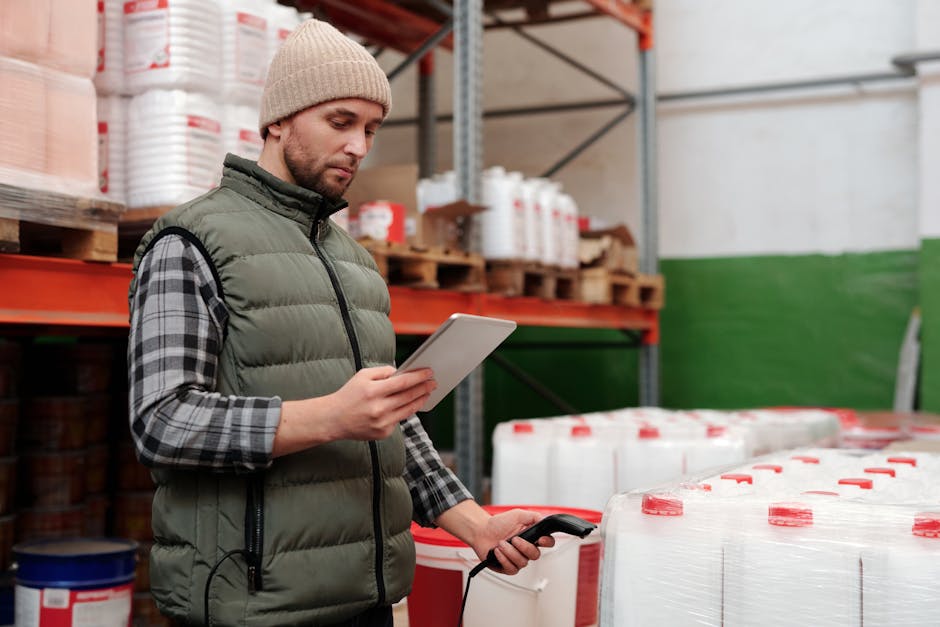
Each of these materials offers unique properties that can significantly enhance the structural integrity, efficiency, and sustainability of construction projects. By integrating these advanced materials, builders and architects can push the boundaries of what’s possible in modern construction, paving the way for smarter, more resilient, and sustainable buildings.
As we delve deeper into the capabilities of these innovative materials, it’s clear that the future of construction is not just about building structures but also about embracing new technologies that offer greater benefits to both people and the planet. Moving forward, these materials will play a crucial role in the development of next-generation buildings that are designed to meet the challenges of the 21st century and beyond.
Roofing and Waterproofing Solutions
When it comes to building a structure that withstands the test of time and weather, choosing the best materials for roofing and waterproofing is crucial. Here, we explore some of the top choices in the industry: EPDM, TPO, PVC, Caulking, Roof coatings, and Waterproofing techniques.
EPDM (Ethylene Propylene Diene Monomer)
EPDM is a type of synthetic rubber, well-known for its outstanding durability and versatility. It’s particularly effective in resisting harsh weather conditions, making it a top choice for roofing in areas prone to extreme weather. Why it’s awesome: EPDM roofs can last up to 50 years with proper maintenance, offering a great return on investment.
TPO (Thermoplastic Polyolefin)
TPO roofing is another popular choice, especially for commercial buildings. It reflects UV rays, making it energy efficient, which can help reduce cooling costs during hot months. Installation perk: TPO can be fully adhered or mechanically fastened, providing flexibility in application.
PVC (Polyvinyl Chloride)
PVC roofing systems are known for their strength and resistance to chemicals, oils, and fire. This makes them ideal for restaurants and other businesses that may expose the roof to fats or oils. Eco-friendly bonus: PVC is recyclable at the end of its life cycle, contributing to environmental sustainability.
Caulking
Caulking is used to seal joints or seams against leakage in various structures and piping. The right caulking material can prevent water damage and help maintain indoor air quality by sealing out moisture and drafts. DIY Tip: Always ensure the surface is clean and dry before applying caulking for best results.
Roof Coatings
Roof coatings are applied to roofs to extend their life by protecting them from the elements. They can reflect heat and UV rays, which helps in reducing energy costs by keeping buildings cooler. What to Look For: Choose a coating based on your specific roofing material and climate needs.
Waterproofing
Waterproofing is critical in protecting buildings from water infiltration, which can cause expensive damage. Techniques vary from membrane installation to the application of sealants. Why it’s essential: Effective waterproofing preserves a building’s structural integrity and prevents issues like mold and mildew.
Each of these solutions offers unique benefits and can be tailored to meet the specific needs of a project. Whether it’s the robust protection of EPDM, the energy efficiency of TPO, or the reliability of PVC, selecting the right materials is key to ensuring long-term durability and performance of roofing and waterproofing systems.
Moving on, let’s address some common questions about building materials to help you make informed choices for your construction projects.
Frequently Asked Questions about Building Materials
What Makes a Material “Superhard”?
A material is considered “superhard” if it can resist scratches and dents from most other materials. The Vickers hardness test measures this by pressing a diamond point into the material and seeing how much it resists deformation. Superhard materials score high in gigapascals (GPa) on this test, indicating they have a strong, tightly bonded structure.
How Can I Choose Eco-Friendly Building Materials?
Choosing eco-friendly building materials involves looking for products that minimize environmental impact. These materials are often made from natural or recycled sources and are manufactured using processes that require less energy and produce fewer emissions. Examples include linen, silk, hemp, organic cotton, wool, and cashmere. Always check for certifications like LEED to ensure the materials meet high environmental standards.
What Are Some Innovative Materials for Construction?
The construction industry is embracing innovative materials that offer enhanced performance and environmental benefits. Some examples include:
- Kevlar: Known for its use in bulletproof vests, Kevlar is also used in construction for its high tensile strength.
- Pervious Concrete: Allows water to pass through, reducing runoff and promoting groundwater recharge.
- Metal Foam: Lightweight yet strong, it’s useful for structural supports that need to be both light and durable.
- Aerogel: Known as ‘frozen smoke’, aerogel has incredible insulating properties and is used in windows and other insulation systems.
- Graphene: The strongest material tested, graphene is an excellent conductor of electricity and heat, making it ideal for a variety of applications, including in the enhancement of building materials.
These materials are at the forefront of technology, often providing solutions to complex engineering challenges while also contributing to greener and more sustainable construction practices.
Understanding these materials and their applications will help in making the best choices for both performance and environmental impact in your projects.
Conclusion
In wrapping up our exploration of the best building materials, it’s clear that the choice of materials significantly influences the sustainability, efficiency, and durability of construction projects. Among the diverse options available, one standout solution is spray foam insulation provided by Spray Foam Insulation USA.
Spray foam insulation is not just another item in the array of building materials; it represents a step in how we think about sealing and insulating our spaces. With its superior R-value and unique ability to fill and seal every nook and cranny, spray foam creates a tight thermal envelope that traditional materials can hardly match. This envelope significantly reduces air leakage and energy costs, making it an ideal choice for those looking to enhance the energy efficiency of their buildings.
Moreover, the versatility of spray foam extends beyond just insulation. It also plays a crucial role in moisture control, which is vital for preventing mold growth and maintaining indoor air quality. Whether you’re retrofitting an old home or constructing a new commercial facility, the application of spray foam can contribute immensely to the building’s overall health and structural integrity.
At Spray Foam Insulation USA, we understand the importance of not just selling a product but providing a solution that aligns with our customers’ needs for sustainability and efficiency. Our commitment to excellence is reflected in every project we undertake, ensuring that we deliver only the best outcomes for our clients.
For those interested in learning more about how spray foam can transform your next construction project, we invite you to explore our dedicated service page on attic insulation. Here, you’ll find detailed information on the benefits and applications of spray foam, helping you make an informed decision for your insulation needs.
In conclusion, as we continue to seek out the best materials for our construction projects, consider not only the immediate benefits but also the long-term impacts on energy consumption and environmental sustainability. With Spray Foam Insulation USA, you’re choosing a partner dedicated to providing top-tier, innovative solutions that meet these criteria and more.

